After our day trip to Mtskheta, we ventured a little further afield to the south eastern region of Kakheti which, as well as the following sites, is also famed for its wine. Enroute to our destination of Sighnaghi and straddling the border with Azerbaijan is the 6th century cave monastery of Davit Gareja. Using public transport to get out this way would have doubled the time we needed, so we took the easy option and hired a guide-taxi through our Tbilisi guesthouse.
Davit Gareja
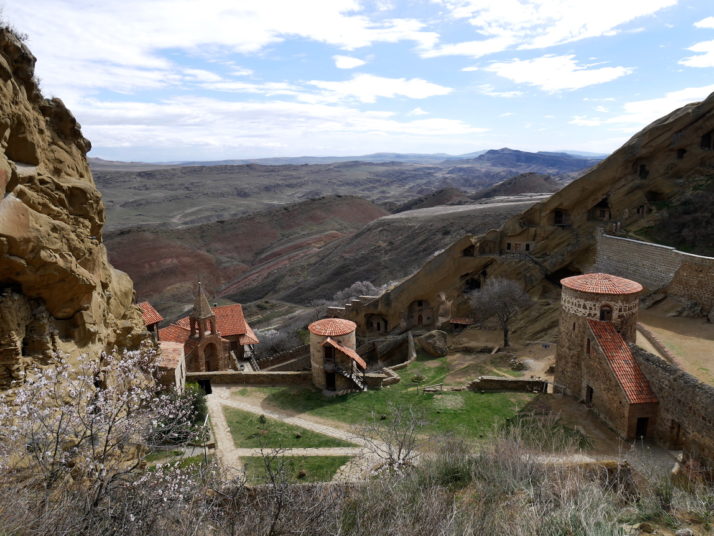
Looking down into Lavra monastery on the Georgian side of the Davit Gareja complex. The surrounding stripy red hills reminded us of the colourful landscape of Tsagaan Suvraga in Mongolia
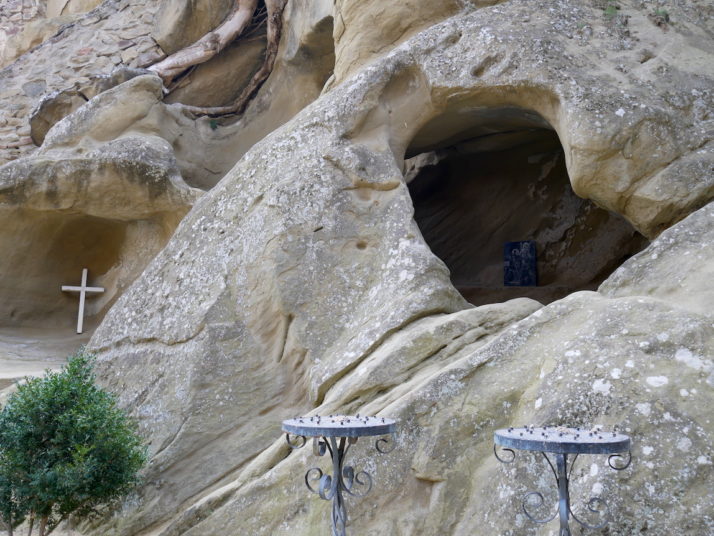
Davit’s cave, most likely dug by himself ~1,500 years ago
From the upper courtyard we took an energetic trail up through the monastery, past a few more basic caves and a couple of armed Georgian border guards to the top of the ridge before dropping a little way down the other side. I wasn’t entirely sure why we’d left the monastery and were following a path that is essentially the border with Azerbaijan until we’d gone about 100 meters..
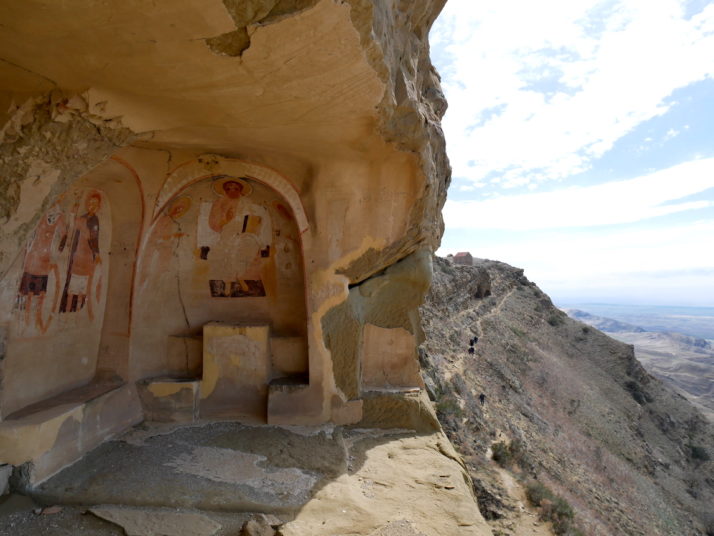
Oh! That’s why! Obviously we knew it was a cave monastery but I had no idea how big it had been and that a lot of the caves had been covered in frescoes painted in the 10th to 13th centuries
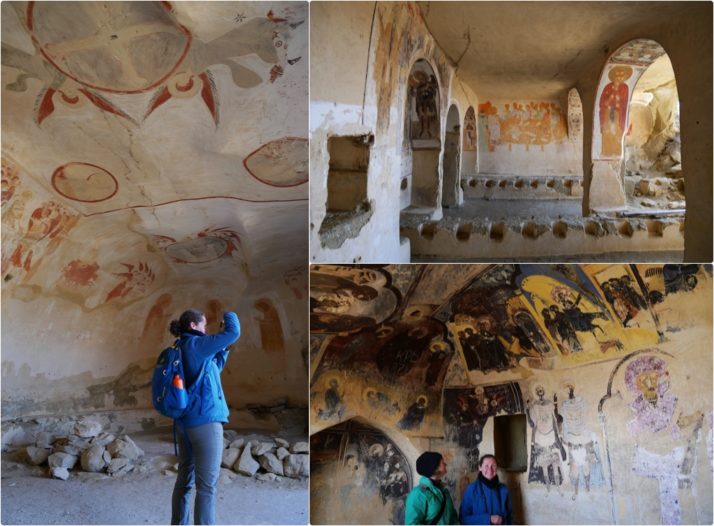
Exploring the frescoes, including the dinner hall (top right) with a depiction of the last supper
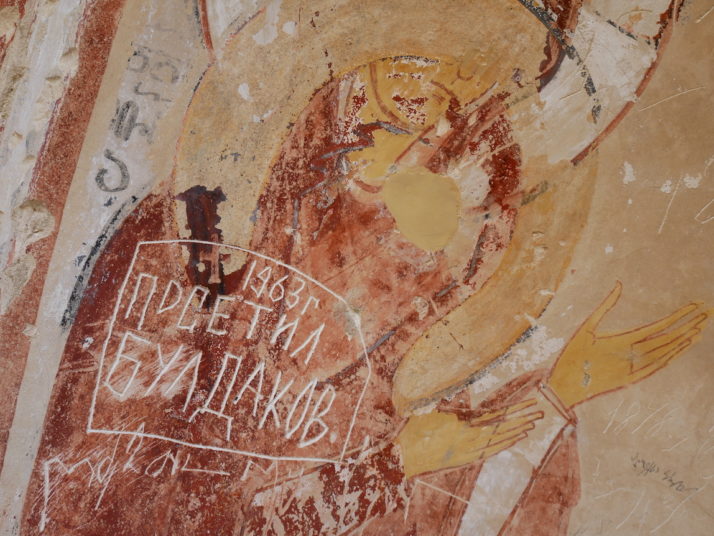
Soviet era graffiti – it’s a shame but it’s also a reminder of that period in the monastery’s history
Bodbe Convent
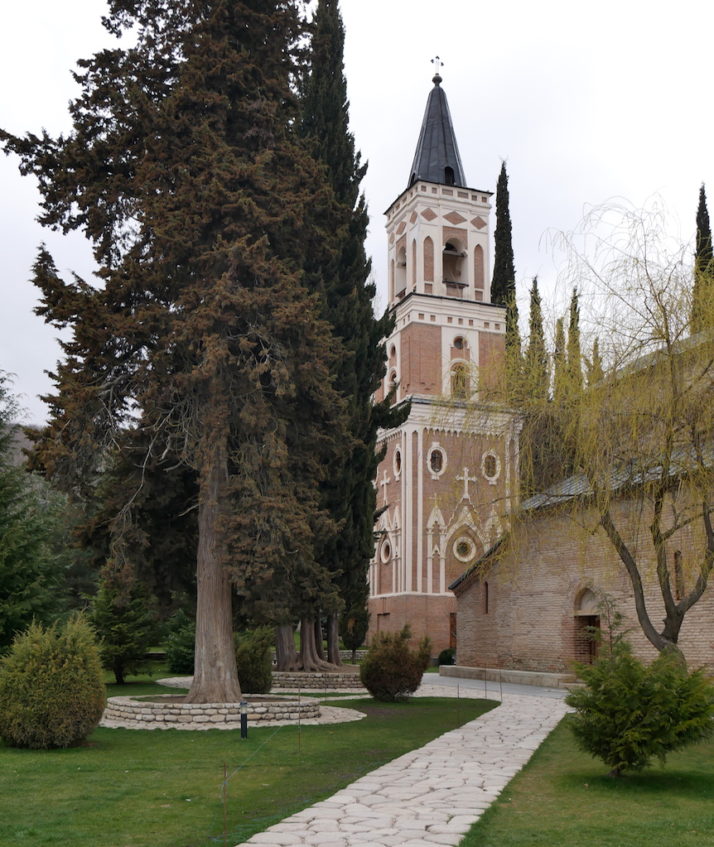
The church (right) and bell tower of Bodbe Convent. The grave of St. Nino is inside
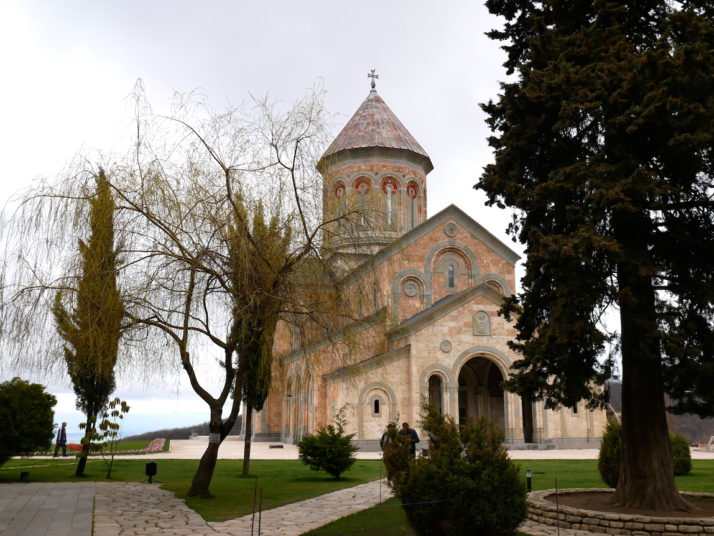
They’d nearly finished a new cathedral-sized church in the grounds of the convent. It looks almost complete from the outside with a lovely mix of texture and materials but it was still a building site inside
Sighnaghi
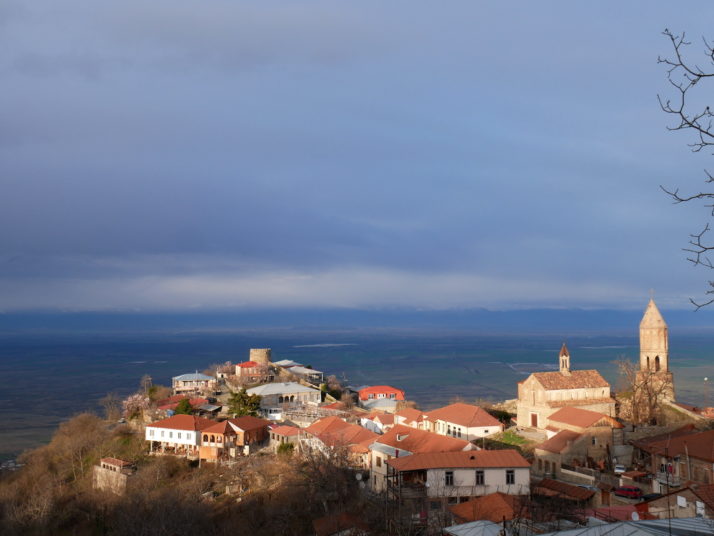
Our base for a couple of nights was Signhaghi, a laid-back, quiet, picturesque hill-top town ringed by a turret studded wall. Given that we’d already done our day’s sightseeing activity before we’d arrived, we took a leisurely wander around the town’s walls which afford spectacular views of the wine growing Alazani valley and Caucasus mountains beyond (when there aren’t clouds in the way!).
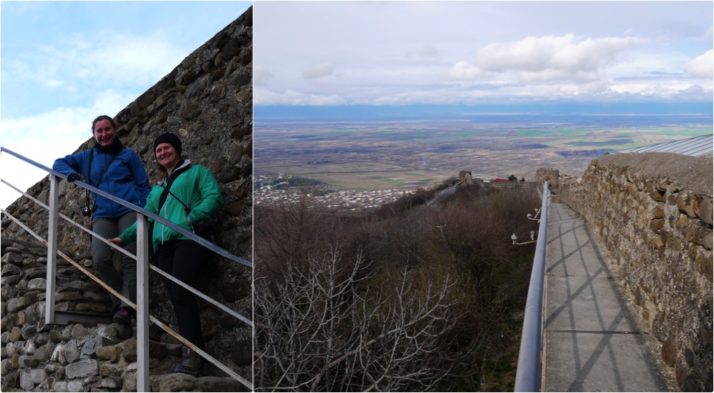
One of the few staircases onto the walls around Sighnaghi that aren’t in the round turrets
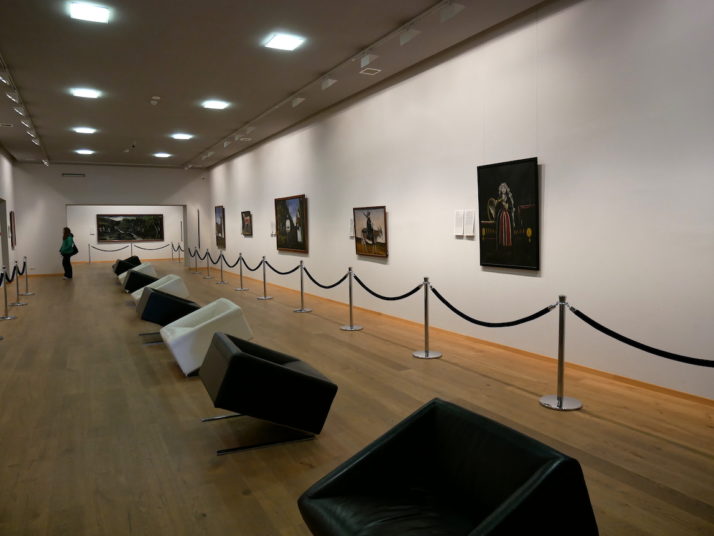
Just off the main town square is the small but excellent Signhaghi Museum which finishes with a collection of works by the famous pauper painter Pirosmani who was born in Kakheti
After a lazy day of wandering around in the morning and catching up with photos and diary writing in the afternoon we spent the evening indulging in great food and very good, very local wine!
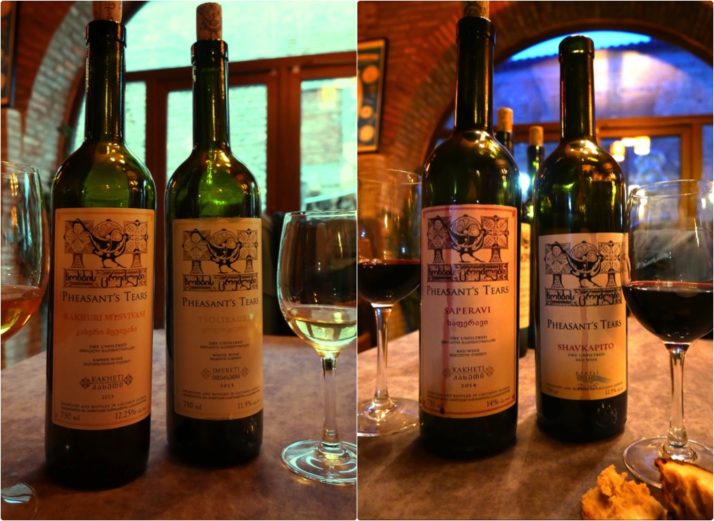
We opted for the wine tasting menu to accompany the food at the renowned Pheasant’s Tears which consisted of 6 wines from vineyards across Georgia
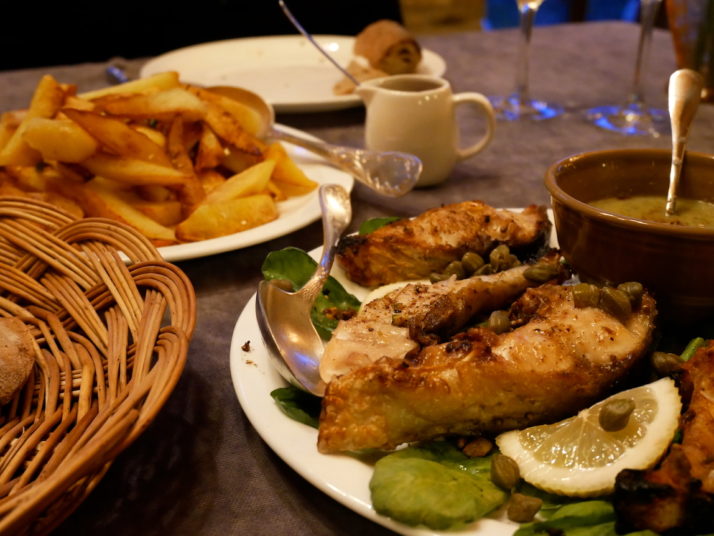
The food we had in Sighnaghi deserves a mention too – we unconsciously ordered fish and chips with our wine tasting – how does the saying go? you can take the British out of Britain..
The Kakheti region makes up about 60% of Georgia’s vineyards and has been a wine producing area for over 8,000 years. To this day the Georgians take enormous pride in their traditional method of natural fermentation in large clay pots called qvevri sunken into the ground. They also use the whole grape – skin and pips – which turns their white wines a rich sunset amber colour, though they’re still light and refreshing. Delicious!

 two year trip
two year trip